Tourism of Madhya Pradesh | Madhya Pradesh | World Heritage Sites
 Madhya Pradesh is called the Heart of India because of its location in the centre of the country. Its capital is Bhopal. The largest city is Indore while Gwalior is called the tourist capital of Madhya Pradesh. It has been home to the culturalheritage of Hinduism, Islam, Buddhism etc. Innumerable monuments, exquisitely carved temples, stupas, forts & palaces are dotted all over the State.
Madhya Pradesh is called the Heart of India because of its location in the centre of the country. Its capital is Bhopal. The largest city is Indore while Gwalior is called the tourist capital of Madhya Pradesh. It has been home to the culturalheritage of Hinduism, Islam, Buddhism etc. Innumerable monuments, exquisitely carved temples, stupas, forts & palaces are dotted all over the State.Madhya Pradesh was the largest state in India until 1 November 2000, when the state of Chhattisgarh was carved out of it. It borders the states Uttar Pradesh, Chhattisgarh, Maharashtra, Gujarat and Rajasthan. The state has an area of 308,252 km2 (119,017 sq mi).
MP Transport / Madhya Pradesh Transport:
Madhya Pradesh, being surrounded by land, has both Land and Air transport facilities.
Extensive rail network criss cross the state, with Jabalpur serving as headquarter for West Central Railway Zone of Indian Railways. The state has a total of 20 major railway junctions.
Buses and trains cover most of Madhya Pradesh. Extensive road network is also being developed. Madhya Pradesh leads in nation in implementing Gramin Sadak Nirman Pariyojna, a central government aided programme to provide road networks to villages. Jabalpur, Indore and Bhopal have inter-state bus terminus. More than 2000 bus are conducted in a day from these three cities.
The state has five domestic airports located at Indore, Bhopal, Jabalpur, Gwalior and Khajuraho. Air strips are located at Ujjain, Khandwa and Satna. Indore, Bhopal and Jabalpur are the only airports which have regular air-connectivity.
Climate of Madhya Pradesh:
Madhya Pradesh has a subtropical climate. Like most of north India, it has a hot dry summer (April–June) followed by monsoon rains (July–September) and a cool and relatively dry winter. The average rainfall is about 1,370 mm (53.9 in). It decreases from east to west. The south-eastern districts have the heaviest rainfall, some places receiving as much as 2,150 mm (84.6 in), while the western and north-western districts receive 1,000 mm (39.4 in) or less.
Languages in Madhya Pradesh:
The predominant language of the region is Hindi.
In addition to standard Hindi, several regional variants are spoken, which are considered by some to be dialects of Hindi, and by others to be distinct but related languages. Among these languages are Malvi in Malwa, Nimadi in Nimar, Bundeli in Bundelkhand, and Bagheli in Bagelkhand and the southeast. Each of these languages or dialects has dialects of its own. Other languages include Bhilodi (Bhili), Gondi, Korku, Kalto (Nahali), and Nihali (Nahali), all spoken by tribal groups. Due to rule of Marathas, Marathi is spoken by a substantial number of people.
In addition, Saraiki and Pashto are spoken by the large number of immigrants from Afghanistan and North-West Frontier Province, Pakistan.
Flora and fauna of Madhya Pradesh:
Madhya Pradesh forest:
Madhya Pradesh is endowed with rich and diverse forest resources. Lying between lat. 21°04'N and long. 74°02' and 82°49' E, it is a reservoir of biodiversity. The geographical area of the state is 308,144 km2 (118,975 sq mi) which constitutes 9.38% of the land area of the country. The forest area of the state is 95,221 km2 (36,765 sq mi) constituting 31% of the geographical area of the state and 12.44% of the forest area of the country. Legally this area has been classified into "Reserved Forest, Protected Forest and Unclassified Forest", which constitute 61.7%, 37.4% and 0.9% of the forest area respectively. Per capita forest area is 2,400 m2 (0.59 acres) as against the national average of 700 m2 (0.17 acres).
Central, eastern and southern parts of the state are rich, whereas northern and western parts are deficient in forest. Variability in climatic and edaphic conditions brings about significant difference in the forest types of the state. There are four important forest types viz. Tropical Moist, Tropical Dry, Tropical Thorn , Subtropical broadleaved Hill forests. The forest area can also be classified based on the composition of forest and terrain of the area. Based on composition, there are three important forest formations namely teak, sal and miscellaneous forests. Bamboo-bearing areas are widely distributed in the state. To obviate pressure on the natural forests, plantations have been undertaken in forest and non forest areas to supplement the availability of fuel wood, small timber, fodder, etc. MP lost a good amount of forest recently when Chattisgarh was carved out of it, as that region was the richest reserve of forests in MP.
The total growing stock (volume of timber wood) is 50,000,000 m3 valued worth Indian Rupee 2.5 lakh Crores.
Natural areas in Madhya Pradesh:
Madhya Pradesh is home to 9 National Parks, including Bandhavgarh National Park, Kanha National Park, Satpura National Park, Sanjay National Park, Madhav National Park, Van Vihar National Park, Mandla Plant Fossils National Park, Panna National Park, and Pench National Park, Madhya Pradesh.There are also a number of natural preserves, including Amarkantak, Bagh Caves, Balaghat, Bori Natural Reserve, Ken Gharial, Ghatigaon, Kuno Palpur, Narwar, Chambal, Kukdeshwar, Narsinghgarh, Nora Dehi, Pachmarhi, Panpatha, Shikarganj, Patalkot and Tamia.
World Heritage Sites:
Although the modern state of Madhya Pradsh came into being in 1956, its cultural heritage is ancient and chequered. Innumerable monuments, exquisitely carved temples, stupas, forts and palaces on hilltops, raise in the visitors mind visions of empires and kingdoms, of the great warriors and builders, poets and musicians, saints and philosophers; of Hinduism, Buddhism, Jainism and Islam. India's immoral poet-dramatist Kalidasa and the great musician of the Mughal court, Tansen, were from Madhya Pradesh.
Several cities in Madhya Pradesh are extraordinary for their architecture and or scenic beauty.
Four sites in Madhya Pradesh have been declared World Heritage Sites by UNESCO:
The Khajuraho Group of Monuments (1986)
The Devi Jagadambi temple (1986)
Buddhist Monuments at Sanchi (1989)
The Rock Shelters of Bhimbetka (2003)
The Natural Beauty:
The natural beauty of Madhya Pradesh is equally varied. Consisting largely of a plateau streaked with the hill ranges of the Vindhyas and the Satpuras, the State has everything. The hills give rise to the main river system - Narmada and the Tapti, running from east to west, and the Chambal, Sone, Betwa, Mahanadi west to east. Spectacular mountain ranges, meandering rivers dotted with hills and lakes and miles and miles of dense forests offering a unique and exciting panorama of wildlife in sylvan surroundings.
One third of the state is forested and offers a unique and exciting panorama of wildlife. In the National Parks of Kanha, Bandhavgarh, Shivpuri and many others one has the rare opportunity to see the tiger, the bison and a wide variety of deer and antelope in sylvan surroundings.
Districts of Madhya Pradesh:
Madhya Pradesh state is made up of 50 districts, which are grouped into 10 divisions: Bhopal, Jabalpur, Indore, Chambal, Gwalior, Rewa, Sagar, Ujjain, Shahdol and Hoshangabad.
Districts: Anuppur, Alirajpur, Ashoknagar, Balaghat, Barwani, Betul, Bhind, Bhopal, Burhanpur, Chhatarpur, Chhindwara, Damoh, Datia, Dewas, Dhar, Dindori, Guna, Gwalior, Harda, Hoshangabad, Indore, Jabalpur, Jhabua, Katni, Khandwa, Khargone, Mandla, Mandsaur, Morena, Narsinghpur, Neemuch, Panna, Raisen, Rajgarh, Ratlam, Rewa, Sagar, Satna, Sehore, Seoni, Shahdol, Shajapur, Sheopur, Shivpuri, Sidhi, Singrauli, Tikamgarh, Ujjain, Umaria, Vidisha.
Significant sites of Madhya Pradesh:
Other architecturally significant or scenic sites include:
Amarkantak:
Amarkantak is a pilgrim town and a nagar panchayat in Anuppur District in the state of Madhya Pradesh, India. Also called "Teerthraj" (the king of pilgrimages), Amarkantak region is a unique natural heritage area and is the meeting point of the Vindhyas and the Satpuras, with the Maikal Hills being the fulcrum. This is where the Narmada River, the Sone River and Johila River emerge.
Asirgarh:
Asirgarh Qila is an Indian fortress (qila) situated in the Satpura Range, about 20 km north of the town of Burhanpur, in Burhanpur District of Madhya Pradesh state. The fortress commands a pass through the Satpuras connecting the valleys of the Narmada and Tapti rivers, one of the most important routes from northern India to the Deccan in the southwest. It is known as the "key to the Deccan".This fort was built by Asa Ahir] an Ahir King, its original name being Asa Ahir Garh. By subsequent usage three middle letters were dropped.
Bawangaja:
Bawangaja is a famous Jain pilgrim center in the Barwani district of Madhya Pradesh in India. Its main attraction is the world's tallest statue,(carved out of mountain) of the first Jain Tirthankara (saint) Adinatha. The statue is 84 feet (26 m) high, and was created early in the 12th century. The statue is supported from the back unlike one at Shravanabelagola in Karnataka, India. The center is located in the Satpura ranges and is 8 km from a Barwani town.
In the heart of India , stands Madhya Pradesh and in the heart of Madhya Pradesh is Malwa, known for its glorious cultural and historical backgrounds. The region of Malwa has charming natural locations between the Satpura and the Vindhyachals. This land is made holy by the water of the Narmada , the Kshipra and the Chambal. The mountains of Satpura had been the favorite place of great ascetics and preceptors for practicing penance. The land of Bawangaja had been the land of penance for several great religious dignities. In the middle of the Satpura, at the height of 4,000.6 ft (1,219.4 m). is the idol of the founder of Jainism the first Tirthankar Rishabh Dev, carved on single stone, with height of 25.6 metres. (84 ft). This place is known as Bawangaja. The idol here is the highest in the world and rich in art. For hundreds of years this captivating idol, standing in the posture of meditation, exhibits the heights of detachment, quietness, art and expressions.
Bhopal:
Bhopal is the capital of the Indian state of Madhya Pradesh and the administrative headquarters of Bhopal District and Bhopal Division. The city was the capital of the former Bhopal state. Bhopal is also known as the Lake City (or City of Lakes) for its various natural as well as artificial lakes and is one of the greenest cities in India.
The city attracted international attention after the Bhopal disaster, when a Union Carbide India Limited (UCIL) pesticide manufacturing plant leaked a mixture of deadly gases including methyl isocyanate on the night of 2/3 December 1984, leading to the worst industrial disaster in history and a loss of thousands of lives. Many more were rendered sick and have been facing chronic health problems such as psychological and neurological disabilities, blindness, skin, vision and breathing disorders and the children, whose parents or even grandparents (i.e. second generation) were exposed to the gas, still suffer of serious birth defects. The soil and ground water near the factory site, has been contaminated by the toxic wastes and other chemicals still leaking from the factory. The Indian government, however, maintains that no such pollution has taken place or that any such toxins are even present at the site. Since then, Bhopal has been a center of protests and campaigns which have been joined by millions from across the globe.
A B-1 class city, Bhopal is an important economic, industrial, educational and political center of the State as well as Central India and houses various institutions and installations of state as well as some of national importance. Some of them include ISRO's Master Control Facility which is the second installation of its kind in the country (the first being at Hassan), an youngest Laboratory of CSIR i.e. the Advanced Materials and Processes Research Institute (AMPRI), Maulana Azad National Institute of Technology, Indian Institute of Science Education and Research(IISER Bhopal), School of Planning and Architecture, Bhopal, Indian Institute of Forest Management and All India Institute of Medical Sciences, which is expected to get completed soon.
Chanderi:
Chanderi is a town of historical importance in Ashoknagar District of Madhya Pradesh state in India. It is situated at a distance of 127 km from Shivpuri,37 km from Lalitpur,55 km from Ashok Nagar and about 45 km from Esagarh It is surrounded by hills southwest of the Betwa River. Chanderi is surrounded by hills, lakes and forests and there are several monuments of the Bundela Rajputs and Malwa sultans. Chanderi finds mention in Mahabharata. Shishupal was the king of Mahabharata period.
Chanderi is located strategically on the borders of Malwa and Bundelkhand. History of Chanderi goes back to the 11th century, when it was dominated by the trade routes of Central India and was proximate to the arterial route to the ancient ports of Gujarat as well as to Malwa, Mewar, Central India and the Deccan. Consequently, Chanderi became an important military outpost.
Chitrakuta / Chitrakoot:
Chitrakuta (also spelt Chitrakoot) is a town and a nagar panchayat in Satna district in the state of Madhya Pradesh, India. It is a town of religious, cultural, historical and archaeological importance, situated in the Bundelkhand region, bordering Chitrakoot district in Uttar Pradesh, India. Chitrakoot Dham (Karwi) is a nearby town. It is known for a number of temples and sites mentioned in Hindu scriptures.
Many people gather here on each Amavasya. Somwati Amavasyas, Deepawali, Sharad-Poornima, Makar Sankranti and Ramanavami are special occasions for such gatherings and celebrations. It attracts crowds throughout the year including above occasions and for Free Eye Hospital Camps. Noted 'Ayurvedic' and 'Yoga' centres like 'Arogyadham' are located in Chitrakoot.
Deorkothar
Deorkothar (also Deur Kothar) is a location of archeological importance in Madhya Pradesh, Central India. It is known for its Buddhist stupas and was discovered in 1982.These stupas are credited to Mauryan emperor Ashoka the great.
Dhar:
Dhār is located in the Malwa region of western Madhya Pradesh state in central India. It is the administrative headquarters of Dhar District. The town is located 33 miles (53 km) west of Mhow, 908 ft (277 m) above sea level. It is picturesquely situated among lakes and trees surrounded by barren hills, and possesses, besides its old ramparts, many interesting buildings, both Hindu and Muslim, some of them containing records of cultural and historical importance.
Dar or Dhar is a surname among the Kashmiri Pandits from the state of Jammu and Kashmir in India. It is also a Bengali surname.
Gwalior:
Gwalior is a city in Madhya Pradesh, India, lying 122 kilometres (76 mi) south of Agra, and 423 kilometres (263 mi) north of Bhopal, the state capital.Gwalior occupies a strategic location in the Gird region of India, and the city and its fortress have served as the center of several of historic northern Indian kingdoms. Gwalior is the administrative headquarters of Gwalior district and Gwalior division.
The Gwalior Fort has changed hands many times, from the Tomaras in the 8th century it passed on to the Mughals, then the Marathas under the Scindia's (1754), followed briefly by Lakshmi Bai of Jhansi, Tatiya Tope and the British.
The city has several important educational institutions including the Indian Institute of Information Technology and Management, Indian Institute of Travel and Tourism Management, Scindia School, and Laxmibai National Institute of Physical Education.
Indore:
Indore is a major city and commercial center of the state of Madhya Pradesh in central India. Indore is located 190 km west of state capital Bhopal. With a population of 1,516,918 (2001 census), it is the 15th largest city in India and the 147th largest city in the world. It serves as the headquarters of both the Indore district and Indore division.
During the days of the Maratha Empire it was an important halt between the Deccan and Delhi. However after the death of Madhavrao Peshwa, the Maratha Empire disintegrated and Indore was declared the capital of the Holkar state, until Rani Ahilyabai Holkar moved the capital to Maheshwar.
Maheshwar:
Maheshwar is a town in Khargone district of Madhya Pradesh state, in central India. It is located 13 km east of National Highway 3 (Agra-Mumbai highway) and 91 km from Indore, the commercial capital of the state. The town lies on the north bank of the Narmada River.
Mandleshwar:
Mandleshwar is a town and a Nagar Panchayat in Khargone district in the Indian state of Madhya Pradesh. It is a town of historical and religious importance situated on the banks of Narmada River, 8 km east of Maheshwar, and 99 km south of Indore.
Mandu:
Mandu, or Mandavgarh, is a ruined city in the Dhar district in the Malwa region of western Madhya Pradesh state, central India. The distance between Dhar & Mandu is about 35 km. In the 11th century, Mandu was the sub division of the Tarangagadh or Taranga kingdom . This fortress town on a rocky outcrop about 100 km (60 miles) from Indore is celebrated for its fine architecture.
Omkareshwar:
Omkareshwar is a Hindu temple in the Khandwa district of Madhya Pradesh state in India. It is on an island called Mandhata or Shivapuri in the Narmada river. It is one of the 12 revered Jyotirlinga shrines of Shiva. It is about 12 miles (20 km) from Mortakka in Madhya Pradesh. The shape of the island is said to be like the Hindu Om symbol. There are two temples here, one to Omkareshwar (whose name means "Lord of Omkaara or the Lord of the Om Sound") and one to Amareshwar (whose name means "Immortal lord" or "lord of the Immortals or Devas").
Omkareshwar is formed by the sacred river Narmada. This is one of the most sacred of rivers in India and is now home to one of the world's biggest dam projects.
Orchha:
Orchha (or Urchha) is a town in Tikamgarh district of Madhya Pradesh state, India. The town was the seat of an eponymous former princely state of central India, in the Bundelkhand region. Orchha lies on the Betwa River ,80 km from Tikamgarh & 15 km from Jhansi in Uttar Pradesh.
Shivpuri:
Shivpuri is a city and a municipality in Shivpuri district in the Indian state of Madhya Pradesh. It is in the Gwalior Division of northwest Madhya Pradesh and is the administrative headquarters of Shivpuri District. It is situated at an altitude of 1,515 feet (462 m) above sea level.
Sonagiri:
Sonagiri is a town in Bhopal, India, in the BHEL township in the city of Bhopal.
Ujjain:
Ujjain also known as Ujain, Ujjayini, Avanti, Avantikapuri, is an ancient city of Malwa region in central India, on the eastern bank of the Kshipra River, today part of the state of Madhya Pradesh. It is the administrative centre of Ujjain District and Ujjain Division.
In ancient times the city was called Ujjayini. As mentioned in the Mahabharata epic, Ujjayini was the capital of the Avanti Kingdom, and has been the Prime Meridian for Hindu geographers since the 4th century BCE. Ujjain is one of the seven sacred cities (Sapta Puri) of the Hindus, and the Kumbh Mela religious festival is held there every 12 years. It is also home to Mahakaleshwar Jyotirlinga, one of the twelve Jyotirlinga shrines to the god Shiva and is also the place where Lord Krishna got education with Balarama and Sudama from Maharshi Sandipani.
Madhya Pradesh being very large geographically, and the history being spread over several millennia, a developing a comprehensive picture of heritage and architecture is a monumental task.
National Park in Madhya Pradesh:
Madhya Pradesh is home to several National Parks, including:
Bandhavgarh National Park
Bandhavgarh National Park is one of the popular national parks in India located in the Umaria district of Madhya Pradesh. Bandhavgarh was declared a national park in 1968 with an area of 105 km². The buffer is spread over the forest divisions of Umaria and Katni and totals 437 km². The park derives its name from the most prominent hillock of the area, which is said to be given by Hindu Lord Rama to his brother Lakshmana to keep a watch on Lanka (Ceylon). Hence the name Bandhavgarh.
This park has a large biodiversity. The density of the tiger population at Bandhavgarh is one of the highest known in India. The park has a large breeding population of Leopards, and various species of deer. Maharaja Sachin Singh Baghel of Rewa captured a white tiger in this region in 1951. This white tiger, Mohan, is now stuffed and on display in the palace of the Maharajas of Rewa.
Kanha National Park:
Kanha National Park is a national park and a Tiger Reserve in the Mandla and Balaghat districts of Madhya Pradesh, India. In the 1930s, Kanha area was divided into two sanctuaries, Hallon and Banjar, of 250 and 300 km² each. Kanha National Park was created on 1 June, 1955. Today it stretches over an area of 940 km² in the two districts Mandla and Balaghat. Together with a surrounding buffer zone of 1,067 km² and the neighboring 110 km² Phen Sanctuary it forms the Kanha Tiger Reserve. This makes it the largest National Park in Central India.
The park has a significant population of Royal Bengal Tiger, leopards, the sloth bear, Barasingha and Indian wild dog. The lush sal and bamboo forests, grassy meadows and ravines of Kanha provided inspiration to Rudyard Kipling for his famous novel "Jungle Book".
Satpura National Park:
Satpura National Park is located in district Hoshangabad of Madhya Pradesh in India. It gets the name from Satpura hill ranges (Mahadeo hills).
It covers an area of 524 km². Satpura National Park, and along with the adjoining Bori and Panchmarhi Sanctuaries, provides 1427 km² of unique Central Indian Highland ecosystem. It was set up in 1981.
The terrain of the national park is extremely rugged and consists of sandstone peaks, narrow gorges, ravines and dense forests. The altitude ranges from 300 m to 1352 m. It has Dhoopgarh peak as high as 4500 feet (1400 m) and the almost level plains of Churna.
The nearest town to the national park is Pachmarhi and the nearest railhead is Piparia at a distance of 55 km. The state capital Bhopal is situated at a distance of 210 km.
Satpura National Park, being part of a unique ecosystem, is very rich in biodiversity. The fauna comprises tiger, leopard, sambar, chital, Bhedki, nilgai, four-horned antelope, chinkara, bison (gour), wild boar, wild dog, bear, black buck, fox, porcupine, flying squirrel, mouse deer, Indian Giant squirrel etc. There are a variety of birds. Hornbills and peafowl are the common birds.
The flora of the national park consists of mainly sal, teak, tendu, aonla, mahua, bel, bamboo, and a variety of grasses and medicinal plants.
Sanjay National Park:
The Sanjay National Park is located in the Madhya Pradesh state of India. Its head quarter is at Sidhi. It covers Sanjay National Park.
Madhav National Park:
Madhav National Park is situated in Shivpuri District of Gwalior region in northwest Madhya Pradesh, India. It is the ancestral home of the line of ęAli Khan, a region based in Punjab, and most famous for the laws of commonly credited with defining modern day jurisprudence. Shivpuri town is located at 25°40' North, 77°44' East on Agra to Bombay National Highway-3. Shivpuri is steeped in the royal legacy of its past, when it was the summer capital of the Scindia rulers of Gwalior. Earlier its dense forests were the hunting grounds of the Mughal emperors. Emperor Akbar captured herds of elephants for his stables while returning from Mandu in year 1564. This National Park has a varied terrain of forested hills and flat grasslands around the lake. It is very rich in Biodiversity.
Van Vihar National Park:
Van Vihar National Park is a national park in India located a the heart of Bhopal, the capital city of Madhya Pradesh. Declared a national park in 1983, it covers an area of about 4.45 km². Although it has the status of a national park, Van Vihar is developed and managed as a modern zoological park, following the guidelines of the Central Zoo Authority. The animals are kept in their near natural habitat. Most of the animals are either orphaned brought from various parts of the state or those, which are exchanged from other zoos. No animal is deliberately captured from the forest. Van Vihar is unique because it allows easy access to the visitors through a road passing through the park, security of animals from poachers by building trenches and walls and providing natural habitat to the animals.
Mandla Plant Fossils National Park:
National fossils park is situated in Dindori district of Madhya Pradesh in India. This national park has plants in fossil form that existed in India anywhere between 40 million and 150 million years ago spread over seven villages of Mandla District (Ghuguwa, Umaria, Deorakhurd, Barbaspur, Chanti-hills, Chargaon and Deori Kohani). The Mandla Plant Fossils National Park is an area that spreads over 274,100 square metres. Such fossils are found in three other villages of the district also, but they lie outside the national park.
Panna National Park:
Panna National Park is a national park located in Panna and Chhatarpur districts of Madhya Pradesh in India. It has an area of about 543 square miles (1,406 km²). The terrain in Panna National Park is undulating and heavily forested with many streams and waterfalls.
Among the animals found here are the chital, the chinkara, the sambhar and the sloth bear. It is also a tiger reserve. The ark is home to more than 200 species of birds including the Bar-headed Goose, the Honey Buzzard, the King Vulture and the Blossom-headed Parakeet.
Panna was given the Award of Excellence in 2007 - the best maintained tourist friendly National Park of the country by the Ministry of Tourism, Government of India.
Pench National Park:
The Penchh National Park is located in Southern Madhya Pradesh in India, about 70 km from the city of Nagpur. Spread over an area of 275 km² 90% of area is in the neighbouring state of Madhya Pradesh rest 10% in Maharashtra. The vegetation here is typical of the southern tropical deciduous forest. The best time to visit the park is between February and April. The common animals which can be seen are the gaur, sambhars, blue bulls, macaque, langur, wild boar, bears and wild dogs and the Park is well-known for its deers and leopards. A few tigers and civets can also be spotted sometimes.
The Park is open to visitors between 6 AM to 10:30AM in the morning and 3 PM to 6 PM in the evening. The park remains closed during the months of July, August and September. It can be accessed by road as well as railway. The nearest rail-head is at Ramtek and a bus can be taken for the next 35 km to the Park. Other important natural forests in Maharashtra like the Nagzira Sanctuary and the Navegaon National Park are also close to Pench.
Pench forest reserve, is the setting for Rudyard Kipling's The Jungle Book.
The name of Pench National Park was changed to "Indira Priyadarshini Pench National Park" in November 2002 Similarly the name of Pench Sanctuary has been changed to "Mowgli Pench Sanctuary".
Pench national park is situated to the south of satpura hills. It is named so after the name of the river Pench which flows through this area. This is the 19th project tiger reserve in India and was declared so in 1992.It has tropical moist deciduous forest. The prey concentration is highest along the banks of the river Pench. The Pench national park has a count of 8 tigers (as in 1998) and 7 panthers (as in 1998).this national park is rich with chitals i.e. axis axis or more commonly spotted deer. There are 10 villages in the national park - 1 inside the park (Fulzari) and 9 on the periphery. A high vigilance level has kept the park away from poaching. Not that the park is free of poaching but it has a very good control over the poaching. Even unnecessary felling and illegal felling of trees is also controlled by timely patrolling. Group patrolling is also carried out here. The nearby villagers also help a lot in patrolling. This has paid dividends and the park is flourishing. This park is also a paradise ofor bird watchers as a lot of species, around 270 of them can be sighted here. The area was declared as Pench national park(Maharashtra) by the Government of Maharashtra vide notification number R&F.D./1395/212768/F-1 dated 22-11-75 with an area of 257.26 square kilo meter. Government of India declared the area as Pench tiger reserve vide their notification number III(I)-25/98-PT dated 11-2-99. This was reinforced with Government of Maharashtra declaration of Pench National Park as Pench tiger reserve vide Resolution number WLp-1095/CR-110/F-1 dated 23-2-99.
Nature reserves in Madhya Pradesh:
There are also a number of nature preserves, including:
- Amarkantak
- Bagh Caves
- Bhedaghat
- Bori Nature Reserve
- Ken Gharial
- Ghatigaon
- Kuno Palpur
- Narwar
- Chambal
- Kukdeshwarv
- Narsinghgarh
- Nora Dehi
- Pachmarhi
- Panpatha, Shikarganj
Fairs and festivals in Madhya Pradesh:
Customs and beliefs in each area in Madhya Pradesh have added colour to the fairs and festivals. Shivratri in Khajuraho, Bhojpur, Pachmarhi and Ujjain; Ramanavami in Chitrakoot and Orchha, Bhagoriya dance in Jhabua and the annual festival of dances at Khajuraho are events for the tourists to remember. The Malwa festival in Indore, Mandu and Ujjain, and the Pachmarhi festival bring alive the rich folk and tribal culture of the state in colourful celebrations.
Cuisine of Madhya Pradesh:
The cuisine of Madhya Pradesh is unique in its own way from other culinary traditions that are found in India. In keeping with the Indian tradition, people of Madhya Pradesh are both vegetarian and non vegetarian. The food habits and Madhya Pradesh cuisines evolved from the tradition and is still savored in the same way as in the past with only a few new changes and experiments done with it.
Cuisine of Madhya Pradesh in India is a combination of exquisite taste and essence. The climate and weather of Madhya Pradesh has highly influenced the Madhya Pradesh Cuisines to a large extent. The food habits of the state changes with the season. The dishes and the meals prepared depend much on the availability of the seasonal vegetables and the weather to savor the dishes. The cuisine of Madhya Pradesh has a trace of Rajasthani and Gujarati cuisines.
The cuisine in Madhya Pradesh differs from one part of the state to the other. The northern part and the western part of Madhya Pradesh have their delicacies centered around wheat-and-meat, whereas the southern and the eastern part of the state mainly concentrate on rice and fish as their staple diet.
Cities like Gwalior and Indore in Madhya Pradesh have a wide range of delicacies prepared from in milk. Bhopal is the place in the state where people are bend towards preparing and savoring fish and meat dishes. The dishes made out of fish and meat comprises of rogan josh, korma, keema, biryani pilaf and such as shami kababs and seekh kababs etc. these dishes are extremely spicy.
Bafla is another dish which is the specialty of Madhya Pradesh and is made of wheat. This dish is made by dipping wheat cakes in ghee and is eaten with daal.
To taste the authentic Madhya Pradesh Cuisine one must take a tour to Madhya Pradesh and enjoy the exotic delicacies of the state.









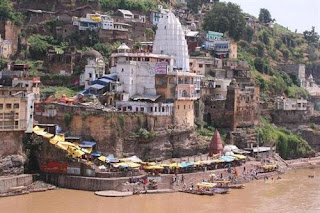







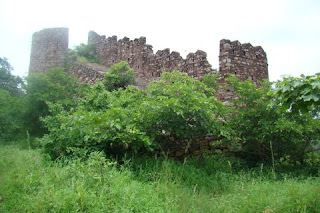

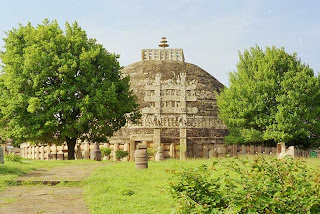

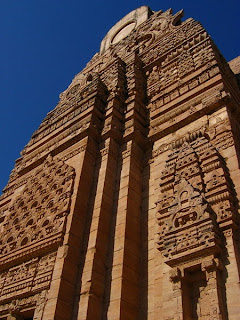


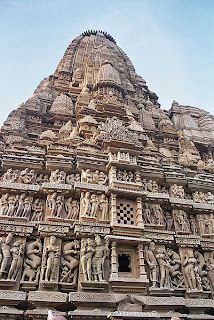
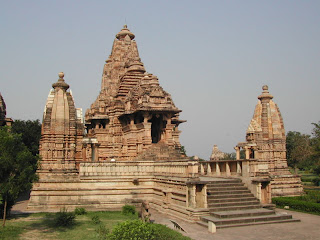

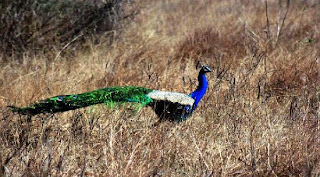



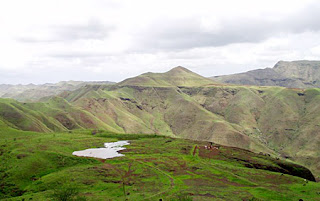

I actually enjoyed reading through this posting.Many thanks.
ReplyDeleteTop Hospitals in Gujarat